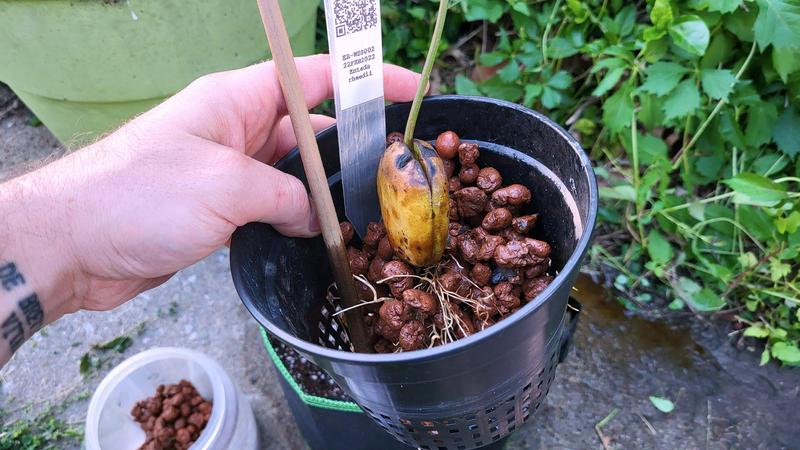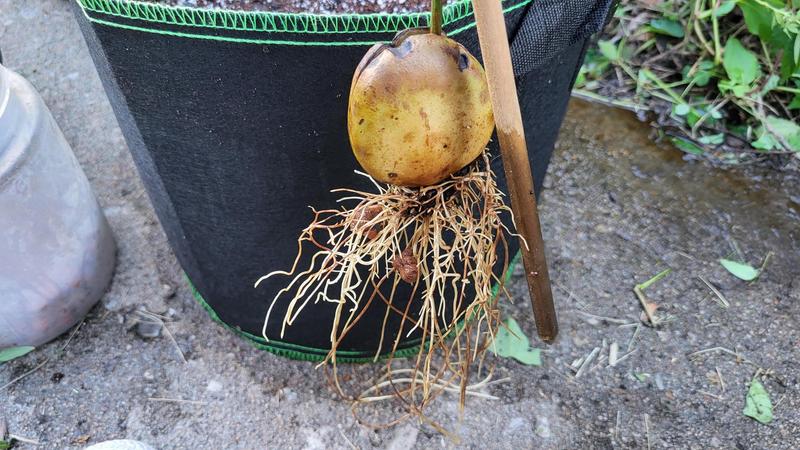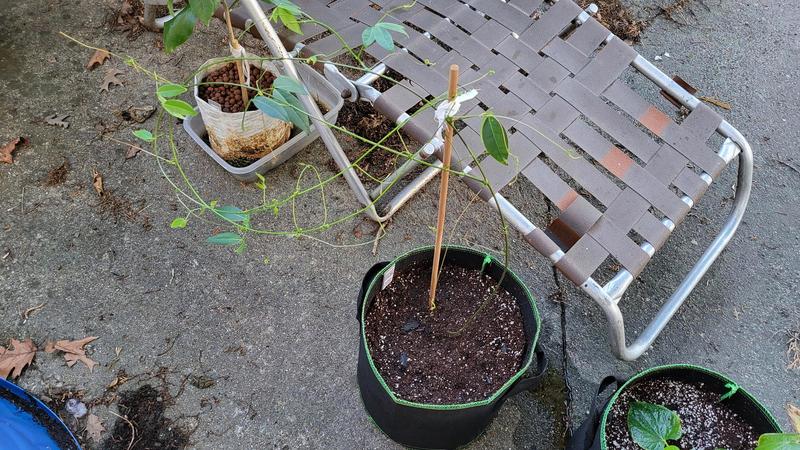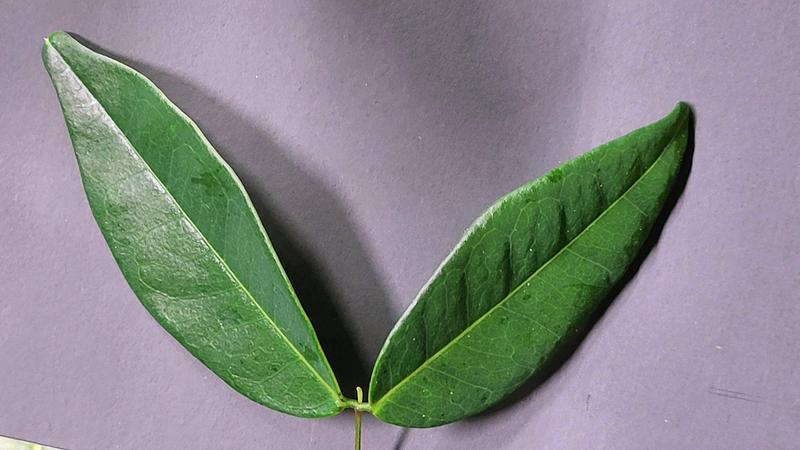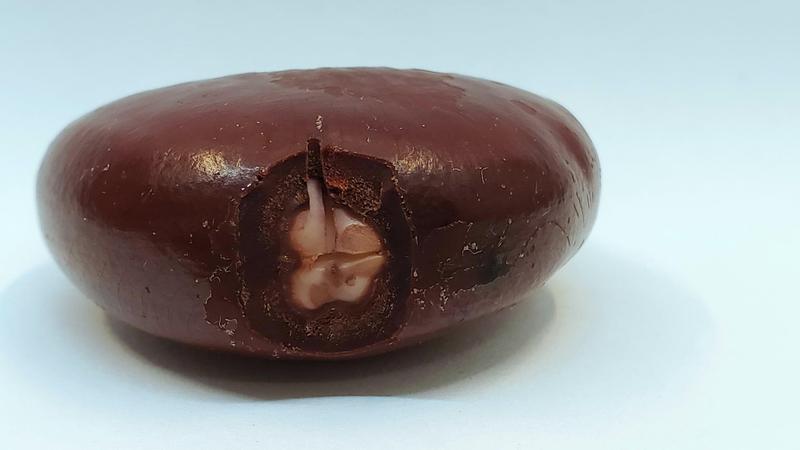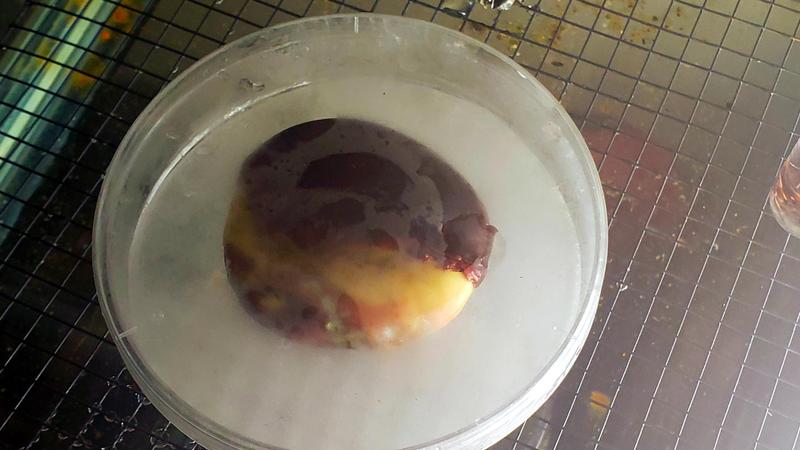Entada rheedii
A extremely long African vine that produces large seeds capable of stimulating vivid dreams when consumed.
Propagation
Seeds of rheedii are sold in online stores (Etsy, eBay) as a source of medicinally important compounds. The long lifetime of seeds, protective seed coat, and distinct features ensure reasonable viability and identity from any source.
Germination
| media | germination | temperature °C | note | reference |
|---|---|---|---|---|
Naturally, rheedii seeds are mechanically abraded by sand and rocks on the shore. Alternatively, they can be digested by elephants.[1]
Mechanical abrasion[2] and acid scarification[3] induce water absorption and germination. Soaking seeds in hot (95°C) water or cold water is insufficient for imbibition and does not induce germination.[3]
Soaking intact seeds in acetone for five minutes increased the germination percentage slightly compared to no treatment. Cutting notches into the seed coat dramatically increased germination. Further increases were noted by soaking cut seeds in water for 24 to 72 hours, with the best at 48 hours.[1]
The seeds can remain viable for years.[1]
Vegetative
In-Vitro
| basal media | supplements | source | target | note | reference |
|---|---|---|---|---|---|
Cuttings of rheedii root equally well with and without IBA treatment regardless of the season (~55% success rate, average). However, later performance is slightly better when 0.4% IBA pretreatment is used.[1]
Cultivation
| Planting density (m-2) | inter-row space (cm) | intra-row space (cm) | note | reference |
|---|---|---|---|---|
The average height of seedlings of E. rheedii at 6 months after sowing is about 1.5 meters with about 14 leaves and a collar diameter of about 5mm.[1]
Cultivation in suboptimal conditions for four years only produced a spindly climbing vine, not the thick tree-like plants in natural habitats.[2]
Harvest
Yield
| product | source | yield per season (kg/ha) | note | reference |
|---|---|---|---|---|
| product | source | yield per plant | note | reference |
|---|---|---|---|---|
Soilless
Soil
| soil type | pH | C-content % | precipitation | temperature (°C) | altitude (m) | note | reference |
|---|---|---|---|---|---|---|---|
Fertilization
| type | rate | time | note | reference |
|---|---|---|---|---|
Temperature
Lighting
| fixture type | photoperiod | illumination | note | reference |
|---|---|---|---|---|
Pests
Ecology
Morphology
| character | measurement | unit | notes | reference |
|---|---|---|---|---|
The epithet Entada rheedei is used in IPNI. Although the epithet has usually been written rheedii, we adopt rheedei. According to K. Gandhi one of the editors of IPNI, rheedei is derived from Hendrik Adriaan von Rheede tot Draakestein. Although the Dutch ‘Rheede’ is often spelled ‘Rheed’ in English, he did not spell his name Rheed. Sprengel’s use of rheedii is therefore corrected to rheedei (vide Art. 60.7 Ex. 15) (Gandhi pers. comm.).[4]
Roots
The plant consists of a distinct tap-root system. The main root attains up to 25-40 cm in length, and 0.3-0.7 cm in diameter, bearing tiny fibrous rootlets.(p. 314)[2]
Stem
The main stem reaches up to 3 m height. The stem lower parts are green, more or less cylindrical, solid and flexible, about 0.5 cm in diameter. The stem upper parts are more or less cylindrical with six ridges and dark greyish-brown color.(p. 314)[2]
Leaves
The leaves are compound, bipinnate. The main axis of the leaf terminates in a bifid tendril. The leaflets are 2 (rarely 3) pairs oppositely arranged on a nearly cylindrical rachis.(p. 314)[2]
Inflorescence
Seeds
The seeds are round disc shaped or elliptically flat, smooth dark brown to black in color and glossy with fine striations. It measures 3-6.5 cm W, 3-7.8 cm L and 0.7-2.5 cm thickness. They have thick and hard seed coats. One hundred seeds weight 2.46 to 3.06 kg.(p. 315)[2]
Seed testa are up to 2mm thick.[1]
SEM images of seed surface.[5]
Phytochemistry
| compound | source | concentration (mg/g dry weight) | note | reference |
|---|---|---|---|---|
| total ash | seed | 72.5 ± 8.22 | species comparison | [6] |
| acid insoluble | seed | 31.67 ± 2.89 | species comparison | [6] |
| water-soluble ash | seed | 18.33 ± 7.64 | species comparison | [6] |
| free amino acids | seed | 1.17 | species comparison | [6] |
| soluble sugar | seed | 39.64 ± 0.02 | species comparison | [6] |
| total oil | seed | 3.00 ± 0.02 | species comparison | [6] |
| free β-sitosterol | seed | 3.65 ± 0.09 | species comparison | [6] |
| free stigmasterol | seed | ND | species comparison | [6] |
| conjugate β-sitosterol | seed | detected, unquantifiable | species comparison | [6] |
| conjugate stigmasterol | seed | detected, unquantifiable | species comparison | [6] |
| tetradecanoic acid | seed | 0.23 ± 0.03 | species comparison | [6] |
| pentadecanoic acid | seed | ND | species comparison | [6] |
| hexadecanoic acid | seed | 0.216 ± 0.01 | species comparison | [6] |
| 7-hexadecanoic acid | seed | 0.30 ± 0.01 | species comparison | [6] |
| 9-hexadecanoic acid | seed | 0.75 ± 0.06 | species comparison | [6] |
| 9-methyl tetradecanoic acid | seed | ND | species comparison | [6] |
| 14-methyl hexadecanoic acid | seed | ND | species comparison | [6] |
| heptadecanoid acid | seed | ND | species comparison | [6] |
| 9-octadecenoic acid | seed | 20.39 ± 0.61 | species comparison | [6] |
| 13-octadecenoic acid | seed | 0.53 ± 0.10 | species comparison | [6] |
| octadecanoic acid | seed | 8.23 ± 0.21 | species comparison | [6] |
| 9,12-octadecadienoic acid | seed | 60.65 ± 0.84 | species comparison | [6] |
| 9,12,15-octadecatrienoic acid | seed | ND | species comparison | [6] |
| 11-eicosenoic acid | seed | 2.09 ± 0.06 | species comparison | [6] |
| eicosanoic acid | seed | 0.157 ± 0.00 | species comparison | [6] |
| 2-hexyl cyclopropaneoctanoic acid | seed | ND | species comparison | [6] |
| heptadecanoic acid | seed | 0.75 ± 0.16 | species comparison | [6] |
| 10-nonadecanoic acid | seed | ND | species comparison | [6] |
| 2-octyl cyclopropaneoctanoic acid | seed | ND | species comparison | [6] |
| docosanoic acid | seed | 4.39 ± 0.11 | species comparison | [6] |
| 13-docosenoic acid | seed | ND | species comparison | [6] |
| tricosanoic acid | seed | ND | species comparison | [6] |
| nonadecanoic acid | seed | ND | species comparison | [6] |
| Hexadecane | seed | ND | species comparison | [6] |
| Octadecane | seed | ND | species comparison | [6] |
| Nonadecane | seed | ND | species comparison | [6] |
| Docosane | seed | ND | species comparison | [6] |
| Eicosane | seed | ND | species comparison | [6] |
| Phenol,2,4,bis(1,1,dimethylethyl) | seed | 0.66 ± 0.09 | species comparison | [6] |
Compounds identified in E. rheedii:[7]
Seeds
- Pursaethosides A-E
- Rheediinoside A, B
- Rheedeiosides A-D
- Entagenic acid
- L-Tyrosine O-glucoside
- Dopamine 3-O-glycoside
- Entadamide C
- Entadamide A
- diolein acid
- dilinolein acid
- oleolinolein acid
- dioleolinolein acid
- trioleein acid
- oleodilinolein acid
- trilinolein acid
- oleic acid
- linoleic acid
- myristic acid
- palmitic acid
- stearic acid
- arachidic acid
- behenic acid
- linolenic acid
- high levels of potassium, phosphorus, calcium, and sodium
Bark
- Epicatechin
- Liquiritigenin
- Glabridin
- 4’-O-methylglabridin
- Isoliquiritigenin
- Hispaglabridin A
- Shinflavanone
Infraspecific Variation
Biosynthesis
Distribution
Timecourse
Improvement
| trait | improvement status | reference |
|---|---|---|
Identification
| variety | description | reference |
|---|---|---|
Inheritance
Methods
| type | note | reference |
|---|---|---|
History & Society
The leaves are sold in Indian markets to be eaten as vegetable matter. Likewise, the seeds are also sold for decoration.[8] The Monpa people of Tibet consume rheedii seeds after boiling and draining them ten times to minimize their toxicity.[9]
The mahouts of Laos have used rheedii vine decoctions as a topical treatment for skin outbreaks and wounds on elephants.[10]
Work Log
06 May 2023
Moved the rheedii plant outside for the growing season. I wrapped it around a tomato cage for support.
In the process of extracting the vines, I found a hidden infestation of mealybugs. Each leaf was painstakingly wiped clean with 70% isopropyl alcohol on a cotton ball.
26 Jan 2023
The rheedii is growing well so far. I estimate it is 12-15 ft long at this point.
It is going to be a pain to untangle come spring. A Redditor asked about using a tomato cage as a trellis. That is a great idea and would have saved me the trouble. I believe these are excellent candidates for wrapping around a cage. The stems are very thin and flexible. Even now the lowest part of my plant’s stem is only about 6mm in diameter and just starting to become woody and inflexible. At a height of 1m, I’d say the stems could be wound in a 7cm diameter circle without damage. The tips at 4+ m can be wrapped around a finger without damage. The tendrils can make 1mm diameter circles. There are very few leaves considering the immense length, so there shouldn’t be any mutual shading problems.
Also, the plant seems to be immune to the spider mites and mealybug problem I’ve been having with the comingling kratom plants.
I fertilized the plant with a slow-release fertilizer (Shultz Bloom Food 12-24-12) last month because it was convenient and on sale. I suspect the high phosphorus is mostly wasted.
07 Oct 2022
We are expecting the first frost here in the next few days. The rheedii has been moved indoors for the winter. It’s on the floor, center-right in this image under the cat.
Some COB grow lights provide dappled illumination.
28 Jul 2022
The rheedii has adapted well to the outdoors. It needs a trellis, but this old clothesline will have to do.
The leaves have acquired an interesting color.
06 Jun 2022
Kratky hydroponics typically doesn’t do as well in the hot June weather. I elected to move the rheedii to a fabric pot with peat:perlite-based potting mix.
The roots look nice.
Done.
12 May 2022
Adjusting the rheedii to the outdoor environment.
22 Apr 2022
An example leaf:
07 Apr 2022
A true vine has tendrils that attach to stationary objects to support growth. Anything from other plants to your grow lights.
02 Apr 2022
This thing grows fast!
It has been 39 days since I started this seed and it is already 50cm tall. Since the shoot emerged, it has grown at an average of 5cm per day (2mm per hour)!
The root has yet to penetrate the bottom of the net cup. I anticipate having to cut some of the plastic to make room for the tap root in the future.
27 Mar 2022
The seedling was transferred to LECA with half-strength masterblend nutrients.
25 Mar 2022
The shoot has emerged!
21 Mar 2022
Hairy roots are developing now.
17 Mar 2022
The root has emerged!
10 Mar 2022
The seed has cracked open! Germination is happening!
06 Mar 2022
Trial 2 is progressing well.
I have exchanged the water a couple of times since the last update. The seed now sinks completely in water (it floated at first). I only refilled the beaker to about halfway up the seed this time to allow more aeration.
27 Feb 2022
The trial 2 seed is still soaking. I have exchanged the water twice. I think I will continue soaking until the seed coat splits.
24 Feb 2022
The seed coat around the initial cut has softened enough to be cut with a scalpel. I widened the cut slightly.
22 Feb 2022
Trying again. I’m not taking chances this time with sterilization.
- washed seed thoroughly with dish soap and a scrubbing pad
- soak in 70% ethanol for 5 minutes
- soak in 0.6% sodium hypochlorite + tween 20 (standard mix) for 30 minutes
- rinse 3x cut a notch into the seed with a heat-sterilized hacksaw
- rinse
- soak in water in the germinator at 30°C
02 Jan 2022
I’m going to go with… infected.
So I will try again with a different seed. I think sulfuric acid would be a good thing to try.
26 Dec 2021
The rheedii seed has not done much since soaking. I examined the sanded area and discovered quite an extensive infection.
So I decided to remove the majority of the seed coat and put it back in incubation.
18 Dec 2021
Planted seed in perlite. I am hoping to get a good timelapse.
17 Dec 2021
Exchanged water.
16 Dec 2021
Started one seed. Sanded away the testa until the white cotyledon was exposed. It took longer than I thought it would.
I forgot to disinfect the seed as I wanted to. So I did a quick scrub with some soapy water and bleach.
Put in distilled water to soak for 48 hours.
07 Dec 2021
A few forum posts on rheedii.
https://www.shroomery.org/forums/showflat.php/Number/6858518
https://www.shroomery.org/forums/showflat.php/Number/7228834
https://www.shroomery.org/forums/showflat.php/Number/24541095/
11 Sep 2021
Project Created!







